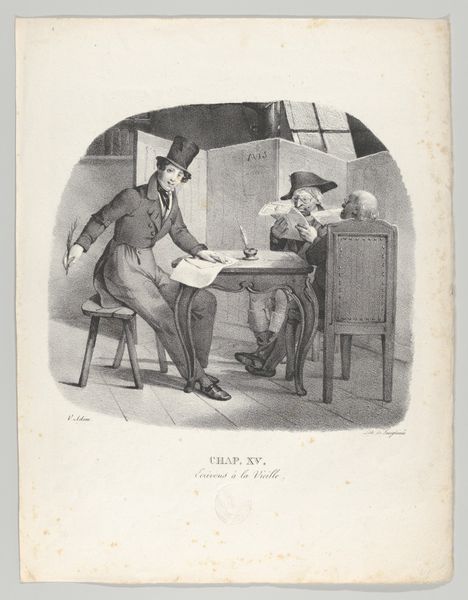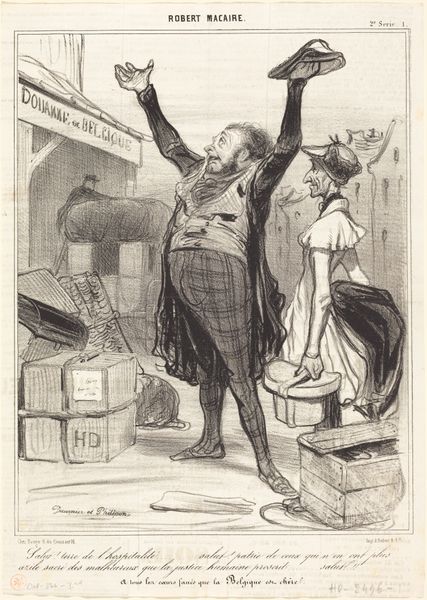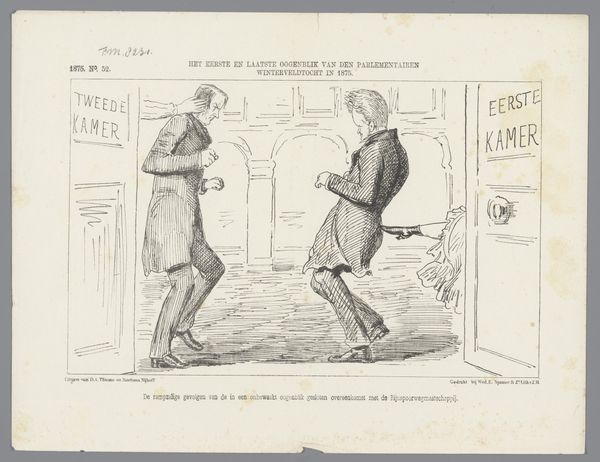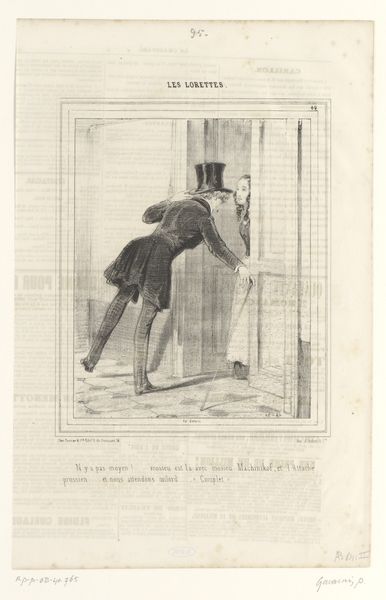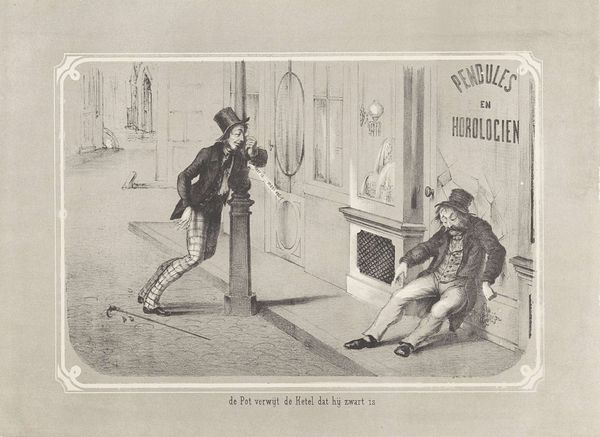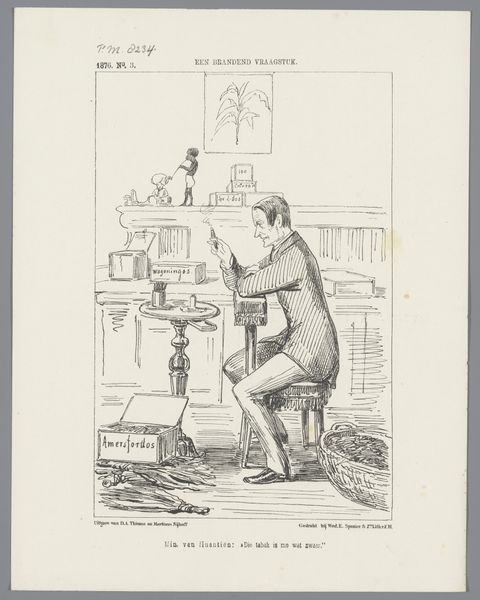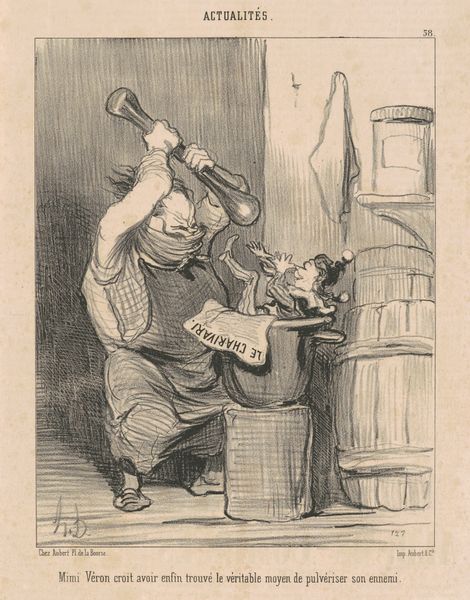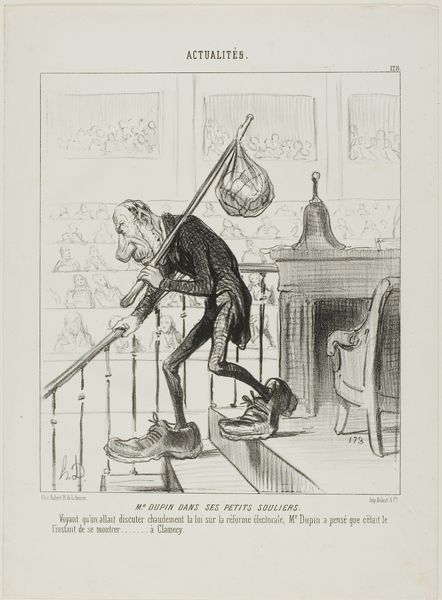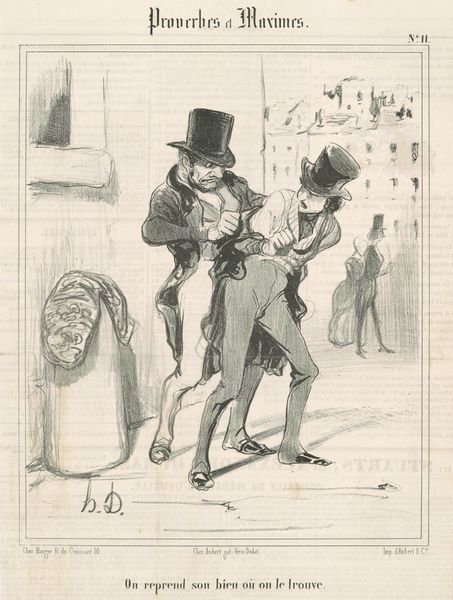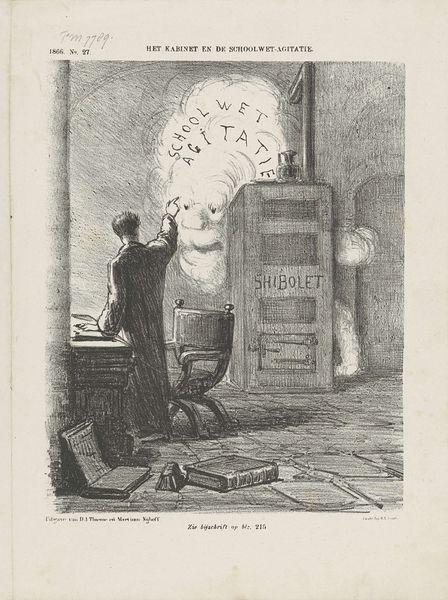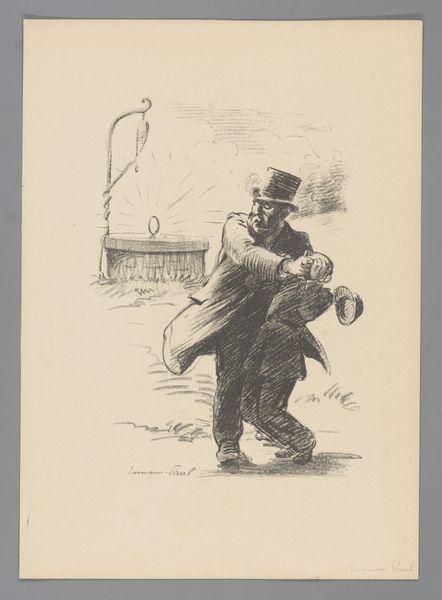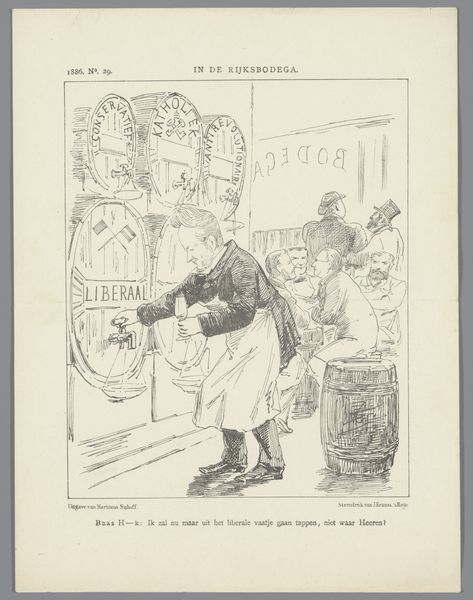
drawing, lithograph, print
#
drawing
#
lithograph
# print
#
impressionism
#
caricature
#
genre-painting
Dimensions: 355 × 260 mm
Copyright: Public Domain
Curator: This lithograph, titled "The Way We Become Senators Nowadays," was created in 1890 by C. Jay Taylor. The artwork appeared in Puck, a satirical magazine known for its political cartoons. Editor: It's quite striking! The stark contrast between the shadowy figure and the brightly lit machine immediately grabs your attention. There’s a strong sense of narrative here; I can almost hear the clink of coins. Curator: Indeed. The subject matter reflects the growing concern about corruption in the late 19th-century American political system, specifically how wealth influenced Senate appointments. Look at the fabrication itself: lithography allowed for mass production, amplifying the critique and making it available to a wider audience, encouraging dialogue. Editor: Focusing on the composition, notice how Taylor uses the visual language of the machine—the levers and coin slot, juxtaposed with the symbols of political power, namely, the U.S. Senate. The figure is faceless. In top hat and tails he might well represent Gilded Age power; one observes his rather graceless action. Curator: And it is precisely the process—the literal insertion of money into a slot to acquire a Senate seat—that Taylor so forcefully critiques. The cartoon taps into anxieties about unchecked capitalism. This concern extended beyond the political sphere and affected production methods and commodity exchange within the art world too, particularly at that moment. Editor: Consider how effectively Taylor uses that exaggerated imagery of "state legislature" below, and the clear indication that money can just be placed to allow access. Curator: Yes, and let's remember that the Puck magazine itself was a commercial venture; and, like many magazines of its day, employed numerous artists to engage with critical issues—suggesting both that these problems had wide social ramifications, while pointing also to debates happening in this media’s labor force. Editor: Seeing Taylor's critique now gives me new insight on these historical moments; he creates this system through very considered lines and juxtapositions. It certainly pushes a kind of structural boundary through the imagery itself! Curator: Precisely; hopefully viewing the political structures portrayed here, while engaging in a brief formal and material analysis, gives us further tools for current engagement.
Comments
No comments
Be the first to comment and join the conversation on the ultimate creative platform.

